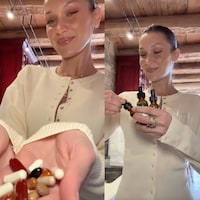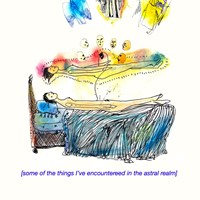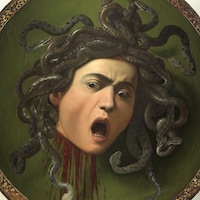The model, musician and artist shares their story
22-year-old Brooks Ginnan is a model, artist and musician living in Brooklyn. Since being discovered as a model Brooks has been shot by the likes of Tim Walker and walked for designers including Charles Jeffrey. Here Brooks shares their story.
I don’t have a specific memory of the first time I was aware of my appearance but I recall becoming conscious of it quite early because kids would ask me why I looked the way I did or if I had cancer. The latter of which was quite scarring.
I have a genetic disorder called Ectodermal Dysplasia that affects my skin, hair and teeth. Because I was made aware of my differences early on, I equated beauty to nearly everything I was not. And as I got older, body dysmorphia mixed with anxiety did not help. To overcome my insecurities I would turn to music and fashion; as I thought if I could not be physically beautiful, I could at least use clothes or creation to present myself the way I wanted to be perceived by others. Music more than anything began to inform my sense of style and identity as a teenager, especially the British and French goth and new wave scenes. The androgyny and freedom of emotion, no matter how tortured, was all quite comforting and beautiful.
I always say that I got into modelling by accident. While in university, I was studying performance art and photography and after a fateful self-portrait project, along with a few friends showing me the rise of models such as Melanie Gaydos and Shaun Ross, I slowly started becoming comfortable posing for others. First, it was friends and classmates, then a small handful of artists in the Los Angeles area, the formative one being photographer Parker Day.
For me, being a model means embracing every part of my body that I grew up being taught to hate. To be able to use a body that is traditionally “other,” both due to my genetic disorder and non-binary identity, feels like an act of defiance in a world that on first thought still has an incredibly narrow idea of what a model, or even beauty itself, should look like. Working in the fashion industry has brought me to a place of self-acceptance that I've never known before.
Even if the struggles I have with my own body are still there, being able to take them and make them into something beautiful has been the most amazing journey, which I'm incredibly grateful for. Being able to be a voice for people born differently, whether with Ectodermal Dysplasia or otherwise, has been a dream come true. I’ve always loved the quote “Art should comfort the disturbed and disturb the comfortable.” If even just a single person felt less alone in who they are through my work, that would be enough for me.
The fashion industry is evolving. I, and others like me, would not have been able to do the work that we do in this industry 10 years ago, although I think many parts of it are still more traditional than anyone would like to admit. I'd like to see more visibility for marginalized voices and identities in ways that are not simply tokenization, or inspiration porn as my dear friend calls it. Instead, respectful integration should be the goal in order to give a better picture of the reality we live in, which is queer, disabled, and not limited to just one specific skin colour or body type.
To me, beauty is embracing yourself and your insecurities. I see the most beauty in honesty and genuine emotion. When I’m in love or dancing alone in my room is when I feel the most beautiful.




